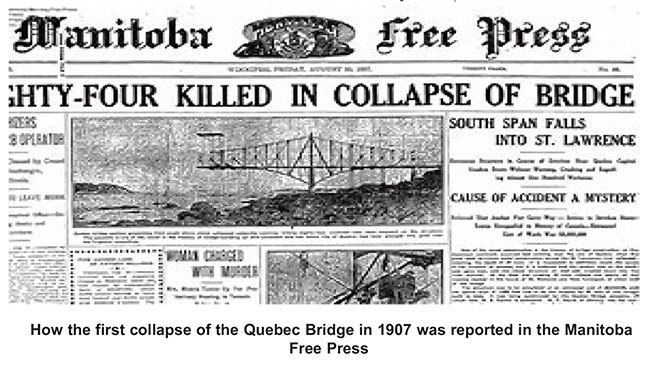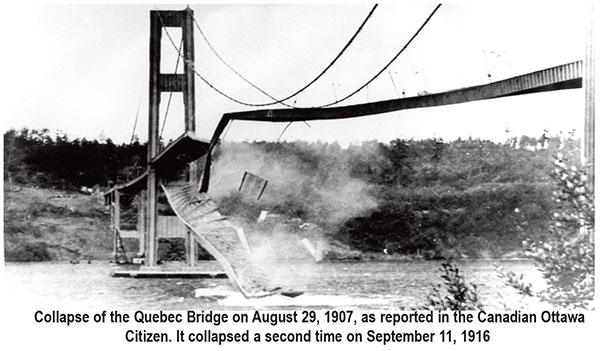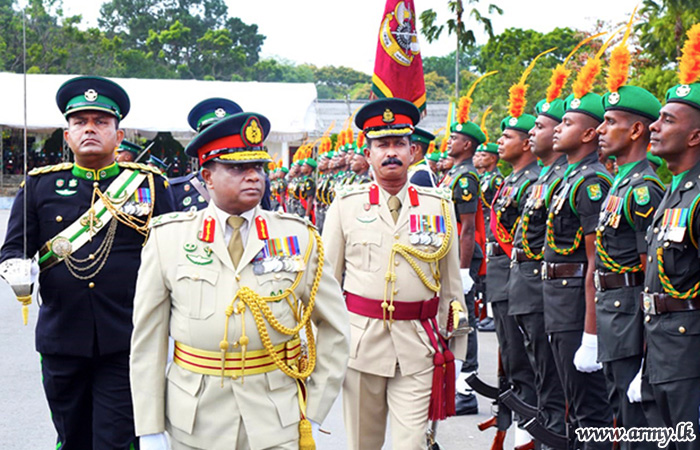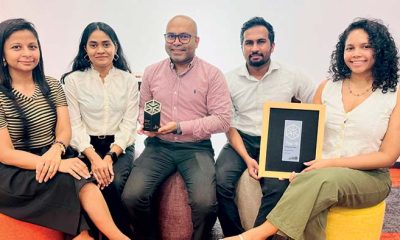Midweek Review
Enginee‘ring’

Ring to bring discipline to a profession
By K.A.I Kalyanaratne
It was while sipping a cup of tea during a short break, this strange story of a ring and its nexus with a bridge was revealed. Seated next to me was another faculty member of the Institute who received a call on her mobile phone. Thinking that these calls are normal she carefreely responded. However, it appeared that the call was somewhat strange, as the expression on her face showed that she was worried and inquisitive. For the sake of courtesy, I decided not to inquire about it. Anyway, on her own she said that a nephew of hers, domiciled in Canada, had recently visited Sri Lanka a few days ago, and unfortunately, he had misplaced his ring. He could recollect that he spent the previous night in a hotel in Colombo. He, therefore, suspected that he had left the ring at that hotel. Now I probed whether it was his wedding ring. She said ‘No’. It was only thereafter the true story came to light.
The story is an extremely strange one. The particular ring had a close connection with a bridge that had collapsed a long time ago in Canada. Her nephew was extremely worried and sad that he would not be able to trace it. It was, in fact, an extremely strange and sentimental one. This young boy, who was in his early twenties, had recently graduated from a prestigious Canadian university, and wearing that ring had been a part of his graduation ceremony. In fact, the boy had been successful in receiving a merit pass as a full-fledged engineer. Then I asked as to why wearing of the ‘ring’, over and above the degree cloak and garland, was so significant. In Canadian universities all graduating engineers are expected to wear a ring in addition to all other ceremonial garments and rituals. The ring in this context, therefore, was more than an adornment.
Holy combination
 This anecdote that revealed the relationship between Canadian qualified engineers and a ring was so strange to me that I became very curious. The ensuing is the result of that keen curiosity. Delving deeper into the subject revealed that what had been conveyed by the particular young engineer to my colleague was half the truth.
This anecdote that revealed the relationship between Canadian qualified engineers and a ring was so strange to me that I became very curious. The ensuing is the result of that keen curiosity. Delving deeper into the subject revealed that what had been conveyed by the particular young engineer to my colleague was half the truth.
Facts: rings, a multipurpose fulfiller
The common fact is that most of us wear rings as mere ornaments, while a few others appear to use the item as a conspicuous display of wealth. However, over the years the ring has been raised to an exalted position, and it has now become a foremost item in our list of jewellery. In today’s society rings perform some symbolic functions concerning marriage, exceptional achievement, high status or authority or membership in an organisation. In Sri Lankan society the ring has crept into the mythical and mystical arena as well. It is common belief that wearing of charmed rings will eliminate the malefic effects of certain astrological settings. Some believe that rings studded with certain gemstones are endowed with supernatural significance. Rings have also given rise to some hilarious and unusual clustering of adjectives. A cocktail-ring for instance, is an oversised ladies’ ring with a large center stone often surrounded by tiny stones. It has earned some synonyms such as cluster-ring, statement-ring and dinner-ring. Doctoral ring is a gold ring worn by a scholar who earns a doctoral degree at a Danish or Swedish university. In the United States it is commonly worn by priests who have earned their doctorate in theology. When worn by bishops or higher-ranking priests, it changes to an ‘Episcopal-ring’.
In lieu of the more common engagement rings some present to their partners ‘Eternity Rings’. Gordon Brown, former Prime Minister of the United Kingdom (from 2007 to 2010) has been known for purchasing an Eternity Ring for his wife, as a recompense for not having originally proposed to her with an engagement ring.
Apart from the above, quite distinct is the Signet Ring. Literatures shows that Signet Rings have been used as far back as 3500 BC, and the people of Mesopotamia had been using them as a symbol of authenticity. A further distinction is that as a Signet Ring is personalized for its owner, no two Signet Rings are alike. Our signatures are a development of the Signet Ring, it being used today to identify how one’s name is written by oneself.
How and why: Aspects of rings
 The Indus Valley is considered the cradle of all eastern civilisations. As wearing jewellery is an inseparable component of eastern cultures, jewellery, including rings, have been discovered from the 3rd millennium BC Indus Valley Civilisation. Excavations have further unearthed factories of small beads in Lothal, India; Lothal being an ancient city located within Gujarat. Rings, dating back to 2500 BC, have been found in tombs in Ur, a city in ancient Mesopotamia. Excavations in archaeological sites of Egypt have also found a variety of rings, and history suggests that rings became more common during the Egyptian Middle Kingdom, containing increasingly complex designs; native styles being superseded by Greek and Roman fashions during the Ptolemaic dynasty. As revealed in the travel-accounts of Marco Polo, in more recent times, it could be inferred that those in the court of emperor Kublai Khan had been wearing a lot of jewellery; which would have obviously included rings.
The Indus Valley is considered the cradle of all eastern civilisations. As wearing jewellery is an inseparable component of eastern cultures, jewellery, including rings, have been discovered from the 3rd millennium BC Indus Valley Civilisation. Excavations have further unearthed factories of small beads in Lothal, India; Lothal being an ancient city located within Gujarat. Rings, dating back to 2500 BC, have been found in tombs in Ur, a city in ancient Mesopotamia. Excavations in archaeological sites of Egypt have also found a variety of rings, and history suggests that rings became more common during the Egyptian Middle Kingdom, containing increasingly complex designs; native styles being superseded by Greek and Roman fashions during the Ptolemaic dynasty. As revealed in the travel-accounts of Marco Polo, in more recent times, it could be inferred that those in the court of emperor Kublai Khan had been wearing a lot of jewellery; which would have obviously included rings.
Rings in literary works
In our own literature the signet ring is referred to as the perasmudda (පේරැස්මුද්ද), in which is embossed the name of the king. This is the seal of the ruler. The term appears in this context in many literary works including the Daham Sarana, of 12th century AD, Saddharmarathnavaliya of 13th century AD, and the Pansiya Panas Jatakaya of 14th century AD. However, in later periods the swan became the sign of authority. Swan is හස් (has) and sign is සන sana in Sinhala. It thus became හස්සන hassana and later අස්සන assana. The currently used අත්සන athsana is thus a corrupt word, as many speculate on its origin under the premise that we use our hands for signing, little knowing that many disabled persons use their legs to sign.
Rings in Shakespearean plays
Among Shakespeare’s plays, Romeo and Juliet identifies a ring as a token of love, a popular thinking that has continued to date. In another play, Cymbeline, a ring is considered as a way of identifying an individual. In the famous, All’s Well That Ends Well, the king of France is troubled by the sight of a ring that was once in his possession. The king once gave that ring to a lady called Helena. However, when the king later saw that that particular ring was worn by her husband, after her death, he became worried that Helena had been murdered.
Collapse of the Quebec Bridge
In our sojourn thus far through the ancient civilisations as well as the more recent literary works we could not establish any connection between a bridge and a ring, or for that matter, the relationship between a ring and a profession or the link a ring had with any other man-made construction. But strangely it happened after the collapse of the Quebec Bridge on two occasions, the first collapse on August 29, 1907, and the second on September 11, 1916, that is, within a short span of nine years. Further, these two disasters were considered the biggest construction failures ever and worst engineering disasters in the century. The impact of the disasters can be measured when one considers the importance of the particular bridge. It is the road, rail and pedestrian bridge across the lower Saint Lawrence River between Sainte-Foy and Lévis, Quebec, Canada, and also a part of the National Transcontinental Railway. Records reveal that the two collapses cost 88 human lives, additional persons being injured. Taken together it needs to be considered as an unpardonable tragedy of the highest order. The bridge was finally completed in 1917, a year after the second disaster.
Rise of new ring-ritual: wearing of iron ring
 Ritual of the Calling of the Engineer (Iron Ring ceremony) in Canada. Recently qualified young engineers enthusiastically show their newly
Ritual of the Calling of the Engineer (Iron Ring ceremony) in Canada. Recently qualified young engineers enthusiastically show their newly
worn iron rings on their little fingers
The two successive disasters cast an unpardonable black-mark directly on the engineers who were involved in this critical construction, and indirectly on the engineering community. Thus, with the sacred intention of making the engineering profession a noble one, the Canadian engineering community strived to consider how best professional discipline could be inculcated in them, and infused into the system for all times. Deviating from the ordinary practices of issuing instructions or taking oaths, a group of Montreal engineers thought of an ingenious method to make their lot self-disciplined, and introduce the desired professional obligations in the form of wearing an iron ring. After the decision was unanimously accepted, the tradition cum ritual of wearing an iron ring by engineers was set in motion in 1922. This group further decided that seven of Canada’s most prominent engineers, function as the centre, termed as the Corporation of the Seven Wardens, to provide cohesiveness to all Canadian engineers.
Rudyard Kipling
These engineers wished to formalize the ritual, and went to the extent of seeking the advice of one of the foremost erudite persons of the time. Their ultimate choice was Rudyard Kipling, an English journalist, short story writer, poet and novelist. He proposed that the ritual be called ‘The Ritual of the Calling of an Engineer’. The more experienced senior engineers volunteered to receive, welcome and support the young engineers. The ritual was subsequently copyrighted in Canada and the US, and thereafter, the ring was registered. Now the young engineers getting qualified from Canadian and US universities are educated by their senior members on the two major disasters, the history of the ritual and their commitments and obligations.
Stainless steel ring
Even the young engineer who narrated the ‘Ring Story’ to my faculty colleague had incorrectly understood that originally these iron rings were made out of the remnants of the collapsed bridge. Of course, the story has a sentimental value. But the fact is that the original rings were turned out of a material familiar to engineers. However, considering that ‘iron’ is not the most suitable material to be associated with this noble purpose, many a member now select stainless steel for their ring.
The engineers wear the ring on the little finger of their working hand. The idea is that it is visible all the time when they are working hands-on, either on a computer or in a site, always reminding them to be mindful of the commitment to their call as responsible engineers.
(K.A.I Kalyanaratne is a Consultant, Publications, Postgraduate Institute of Management University of Sri Jayewardenepura and Vice President, Hela Havula)
Midweek Review
A Special Forces officer’s narrative

‘Deperamunaka Satan’ dealt with several issues that hadn’t been addressed by ex-military men who shared their experiences before Maj. Gen. Dhammi Hewage launched his controversial memoirs seven months ago. The chapter on wartime recruitment underscored the importance of sustained process and the readiness on the part of the Army to inspire youth and the unprecedented impact made by entrepreneur Dilith Jayaweera, one of the presidential aspirants now, to help the armed forces to recruit required personnel. Jayaweera, who had been a classmate of Hewage at St Aloysius, Galle, in fact for the first time met the then Defence Secretary Gotabaya Rajapaksa with the intervention of late Bandula Jayasekera, the then Editor of the Daily News. That meeting led to a massive Triad-led advertising campaign that achieved the unthinkable. Hewage’s narrative is a must read for those interested in the Eelam conflict.
By Shamindra Ferdinando
Fighting was raging in the Vanni in 2008. The 57 Division, tasked to regain Kilinochchi, was facing stiff resistance, while Task Force 1 (TF1) battled the LTTE (Liberation Tigers of Tamil Eelam) units at a higher pace, on a wider front, also in the Vanni west, particularly in the formidable Madhu jungle terrain, which prompted some armchair experts in Colombo to predict that the Army would not come out of it in one piece.
One sarcastic scribe from another newspaper even went to the extent of claiming that the Army would be swallowed up by the LTTE in those jungles.
When Rohan Abeywardena, now with The Island, on behalf of The Sunday Times, raised that possibility, with the Task Force 1 that was still based in the Mannar Rice Bowl region, Major Harendra Ranasinghe of the Special Forces, at his makeshift field office, declared they had prepared well for jungle warfare and were ready as never before. Despite so many naysayers in Colombo they truly proved their mettle in next to no time. Ranasinghe later retired as a Major General without any fanfare.
The Army faced severe shortage of officers and men as fighting Divisions slowly but steadily advanced towards enemy strongholds along numerous thrusts as never before.
The LTTE gradually retreated towards Vanni east but posed quite a formidable threat. Both Pooneryn and Elephant Pass-Kilinochchi section of the Kandy-Jaffna A-9 road remained under its control.
Regardless of stepped-up recruitment, the Army lacked sufficient troops to hold areas that were brought back under government control. Growing casualties further increased the pressure on the fighting Divisions.
Then Major Dhammi Hewage, stationed at Volunteer Force headquarters, Battaramulla, having received an order from Army headquarters, reported to Vanni Security Forces headquarters where he was directed to 611 Brigade. Major Hewage was given the unenviable task of protecting the 15 km Main Supply Route (MSR) from Kalmadu junction to Kirisuddan.
In the absence of fighting troops, the bold officer was assigned medically downgraded personnel. There hadn’t been a single combat ready soldier under Major Hewage’s command and of them approximately 80 percent openly dissented and challenged the Army headquarters’ move.
But the then Lt. Gen. Sarath Fonseka’s Army was not inclined to tolerate dissent. Having served the Army for just over 35 years, Hewage retired as a Major General in August 2022 in the wake of President Gotabaya Rajapaksa’s ouster. At the inception of the then Second Lieutenant Hewage’s somewhat controversial military career, he had first served under the then Lieutenant Colonel Gotabaya Rajapaksa, who functioned as the Military Coordinating Officer, Matale district (May 1989-January 1990).
Hewage launched his memoirs ‘Deperamunaka Satan’ (Battles on Two Fronts) in September last year, a couple of months before Gotabaya Rajapaksa published ‘The Conspiracy to Oust Me from Presidency’, the latter however was far more blunt and dealt with the failure on the part of the military and police to protect their constitutionally elected government.
‘Deperamunaka Satan’
is certainly an immensely readable and hugely stimulating memoir of an officer, who had served the elite Special Forces after being moved from the celebrated Gajaba Regiment to the Rapid Deployment Force (RDF). The author quite easily captured the attention of the reader as he described his meeting with then Lieutenant Shavendra Silva at Saliyapura, Anuradhapura, where he was told of an opportunity to join the RDF.
Having passed out as a Second Lieutenant, in late June 1989, Hewage had been in command of a platoon of the first battalion of the Gajaba Regiment (IGR) deployed on a hill top near Ovilikanda.
On a specific directive of Lt. Col. Rajapaksa, the then Commanding Officer of 1GR, Hewage’s platoon comprising 25 personnel had been deployed there to provide protection to workers of a private firm hired to build four new power pylons to replace those destroyed by the then proscribed Janatha Vimukthi Peremuna (JVP).
It would be pertinent to mention that President Ranasinghe Premadasa, having entered into a clandestine deal with the LTTE, provided arms, ammunition and funds to the group. The LTTE caused quite significant losses on the Indian Peace Keeping Force no sooner they were deployed here under the controversial Indo-Lanka Accord that was forced on us by New Delhi, during the July 1987 and March 1990 period. The Premadasa-Prabhakaran ‘honeymoon,’ however, only lasted for about 14 months, when the LTTE turned its guns against the Premadasa government that nurtured it unwisely hoping that the Tigers would change with proper incentives. The LTTE resumed the war in June 1990, after India withdrew its Army in March 1990 at the request of President Premadasa.
If not for my colleague Harischandra Gunaratne’s offer of ‘Deperamunaka Satan’, the writer could have missed it though Captain Wasantha Jayaweera, also of the Special Forces, alerted me to the launch of the retired Maj. General’s work late last year. Incidentally, Jayaweera, had been quoted in the heart-breaking chapter that dealt with the catastrophic heli-borne landing, death of Special Forces pioneer Colonel Aslam Fazly Laphir and the humiliating fall of the isolated Mullaithivu Army Camp in July 1996 during Chandrika Bandaranaike Kumaratunga’s tenure as the President. Mullaithivu had been the home to the Army’s 25 Brigade. That loss sent shock waves through the defence establishment but, four years later, the LTTE delivered a massive blow to the Army when a Division plus troops couldn’t thwart the LTTE offensive directed at Elephant Pass.
An unprecedented ‘hit’
One of the most intriguing episodes dealt with Maj. Hewage led an attack on an LTTE group positioned in the jungles off Pompemadu without knowing their identity.
In the absence of a suitable contingent of troops for immediate deployment, Hewage had led a group of disabled men through the jungles to take on the LTTE after another patrol consisting of medically downgraded men spotted the enemy but refrained from engaging them.
Why did Hewage risk his life and the precious lives of medically condemned (categorized) men under his command? What did he really expect to achieve in such circumstances? Or was he trying to prove a point to some of his seniors or just acted recklessly on the spur-of-the-moment?
At one point they stopped firing fearing the group under fire by them were either Special Forces or Commandos. But, a shouted question and response in Tamil prompted them to fire everything they had until the group was eliminated.
The ragtag group of soldiers, led by Hewage, after the successful firefight, found four Tiger bodies along with a whole lot of equipment, including a satellite phone and two Global Positioning Systems, that led the Division Commander, then Brigadier Piyal Wickremaratne, to declare that the vanquished enemy unit were members of the LTTE Long Range Patrol.
Hewage’s response to Brig. Wickremaratne’s heartless query as to why bodies of LTTE LRP hadn’t been brought to his base and the circumstances Division Commander’s directive to recover them was not carried out, captured the imagination of the readers.
Interception of enemy communications, within 24 hours after the ‘hit’ off Pompemadu, revealed that the ‘neutralized’ LRP had been tasked with moving some Black Tiger suicide cadres, suicide jackets and other equipment from Puthukudirippu to Anuradhapura, having crossed the Kandy-Jaffna road. The Army ascertained that the LRP had been on its way back to Puthukudirippu after having safely moved a Black Tiger group to Anuradhapura.
There couldn’t have been a similar ‘hit’ during the entire war. Unfortunately, for want of follow up action to highlight the success of his men under trying circumstances, on the part of Hewage, the disabled men were denied an opportunity to receive at least the distinguished RWP (Ranawickrema Padakkama) award.
Hewage’s perspective is important. His narrative is not ordinary or simply a case of blowing his own trumpet, but a genuine bid to present an untold story that may not be to the liking of some of his seniors or of those on the same level.
But, Hewage’s is an inspiring story, especially at a time the military earned severe criticism of some due to shortcomings of a few in higher places. The social media onslaught on selected officers, both serving and retired, has worsened the situation. The devastating allegations by former President Gotabaya Rajapaksa, himself an ex-frontline combat veteran, that the Army failed in its responsibility to protect the elected President made an already bad situation far worse and intolerable.
From Maduru Oya to Kalawanchikudi
Having undergone, perhaps, the toughest training available at that time for elite fighting men at Maduru Oya where Counter Revolutionary Warfare Wing (CRW Wing) is situated, Hewage had been one of the 16 officers to pass out without a parade. All 16 officers who had been there, at the beginning of the training, were fortunate to pass out after the grueling course, though of 483 other rankers, who underwent training at the same time, only 181 were able to complete it.
Of Hewage’s Gajaba contingent (1 officer/30 other rankers) that had been sent for the training, only he and three others, including Lance Corporal Chandrapala, lasted the training period that comprised basic and advance training.
There had been peace in the Northern and Eastern Provinces at that time as President Premadasa played pandu with the LTTE. The group that included Hewage passed out from Maduru Oya during peace time and perhaps seemed to have been unaware of the resumption of the Eelam War with far bolder Tigers ranged against them after having given a bloody nose to the IPKF. However, the then Major Jayavi Fernando, who had been a senior instructor at Maduru Oya, warned those undergoing training there the war was coming. One of the key Special Forces pioneers, Fernando issued the warning at the commencement of the training and at the end of it when he declared let us go to hell. That warning was followed up by a serving of tea.
Having joined The Island in early June 1987 as a trainee reporter, this correspondent had an opportunity to cover the conflict in the North and East as well as the second southern savage uprising, perpetrated by the JVP, and an equally or more violent campaign by the forces to put it down. The time Hewage passed out from Maduru Oya had been dicey as President Premadasa, obviously duped by the LTTE, bent backwards to appease them.
On the orders of the President, the then Army Commander Lt. Gen. Hamilton Wanasinghe (1988-1991) cooperated with the LTTE. The President went to the extent of releasing money to the LTTE, even after the Eelam War II erupted with the disgraceful betrayal of the police and the Army. Fortunately, the Army disregarded the President’s directive. President Premadasa released as much as Rs 125 mn during the 1989/1990 period through the then Treasury Secretary R. Paskaralingham as he remained supremely confident the LTTE could be won over through such strategies. The LTTE proved the President wrong and the consequences, as all of us know, were devastating.
Author Hewage made reference to the formation of the Tamil National Army (TNA) by the Indian government. Although Hewage didn’t touch the issue in detail, that reference should be appreciated as the formation of the TNA should be considered taking into consideration the overall Indian strategy at that time as New Delhi sought to somehow sustain Vartharaja Perumal’s EPRLF-led administration.
Two incidents that would attract the readers were an injury suffered by Hewage while undergoing training at Maduru Oya, where he faced the threat of expulsion, and the death of Second Lieutenant Priyantha Gunawardena, on Nov 17th, 1989, at Kalmunai, during clashes between government forces and the IPKF. The death of Gunawardena caused an immense impact on Hewage, and the colleagues of the dead junior officer, of the 28th Intake, wanted two days leave to attend the funeral. When they sought approval from Maj. Jayavi Fernando, the officer’s no nonsense response must have been received as a warning.
Hewage quoted Fernando, known for his efficient, direct and quite blunt approach whatever the circumstances were, as having told them that the Kalmunai incident was only the beginning. The real war hadn’t even started yet. Gunawardena was the first batch-mate of yours to die. Many more people would die. It would be far more important to complete the course and be ready for the Eelam War II. Once you complete the training you may visit the home of the late colleague. Maj. Jayavi Fernando retired on Oct 31, 1998 during the disastrous Operation ‘Jayasikuru’ (Victory Assured) that was meant to restore Overland MSR from Vavuniya to Elephant Pass. Fernando’s shock retirement caused a severe loss of morale to the Army at a time it was under tremendous pressure not only in the Vanni but in all other theatres as well.
Hewage dealt with the killing of Second Lieutenant Deshapariya also of the Special Forces and his buddy (an assistant assigned to an officer from the time he passes out from the Military Academy) at Galagama where their bodies were set ablaze by the JVP, their deployment at the Engineers’ detachment at Tissamaharama and the sudden appearance of Maj. Laphir of the same detachment on June 13, 1990.
Within 24 hours, they were on their way to Weerwawila where officers, including Maj Laphir, joined the flight to Uhana whereas administrative troops accompanied supplies and other equipment were dispatched overland.
Hewage lovingly recalled how ordinary people waved lion flags to show their support to security forces as they travelled overland from Uhana airport to Ampara against the backdrop of punitive measures taken by the Army against JVP terrorists.
By the time the Army started building up strength the LTTE had massacred several hundred police personnel who had surrendered to them on another foolish directive issued by President Premadasa. Having named the senior officers who had arrived in Ampara to neutralize the LTTE threat, Hewage described the pressure on then Ampara Coordinating Officer then Brig.Rohan de S. Daluwatte was under as he struggled to cope up with the developing scenario.
Hewage gave an extremely good description of the fighting and incidents which involved his unit at a time the Army lacked actual combat experience as there hadn’t been any operations since India compelled Sri Lanka to halt ‘Operation Liberation’ in June 1987 that was meant to clear the Vadamatchchy region in the Jaffna peninsula, which included Velvettiturai, the home town of LTTE Leader Velupillai Prabhakaran.
The Army was suddenly forced to resume both defensive and offensive operations in the aftermath of the massacre of the surrendered police personnel in the East. By the end of 1990, the Army lost control of the Kandy-Jaffna A9 road and remained under LTTE control till Dec 2008/January 2009 when Brigadier Shavendra Silva’s celebrated Task Force 1, subsequently named 58 Division, cleared the Elephant Pass-Kilinochchi south stretch and met Maj. Gen. Jagath Dias’s 57 Division at Kilinochchi.
Hewage called the infamous instructions issued from Colombo during Ranasinghe Premadasa’s tenure as the President to all military installations to surrender to the LTTE pending negotiations. In spite of some police stations accepting the directive, other bases refused point blank. Hewage mentioned with pride how the Commanding Officer at Kalawanchikudy detachment Captain Sarath Ambawa defied those instructions and asked personnel at the neighbouring police station not to surrender but to seek protection at his base. A section of the police surrendered to the LTTE against the Captain’s wishes and were executed but 11 policemen ran across open space to reach the Kalawanchikudy Army detachment. One of them, Constable Ukku Banda succumbed to injuries he suffered as a result of LTTE fire.
Negotiations between Maj. Laphir and a local LTTE leader on the partially damaged Kokkadhicholai bridge in a bid to cross it while the then Foreign Minister A.C.S. Hameed was in Jaffna to work out a last minute ceasefire and the first Sia Marchetti attack (witnessed by Hewage) a little distance away from the bridge and later crossing the river under threat of enemy fire make interesting reading.
Trouble within
Hewage shared his first-hand experience in the 1990 Mullaithivu battle, followed by rescuing of troops trapped in Jaffna Fort also in the same year, various smaller operations in the Eastern theatre and an incident in mid-1994 at Maduru Oya where at the conclusion of risky bunker busting drill he caused an injury to private Rajapaksa, unintentionally resulting in severe repercussions.
Hewage discussed how his seniors exploited that incident to harass him though five years later Corporal Rajapakse served as his buddy during his stint in Jaffna as the Commanding Officer of Combat Rider Team.
Regardless of consequences, Hewage had been courageous and reckless to take decisions on his own on the battlefield and his description of wife of a senior officer based at Maduru Oya over her requirement to secure the services of a civilian cook with the Army is hilarious but later the difficulties the author experienced at his new appointment at the Special Forces Regimental Centre, Seeduwa, and the death of Special Forces man in the hands of Military Police investigating the disappearance of two Browning pistols and two Beretta semi-automatic pistols at their Naula camp explained the turmoil within.
Hewage had been harsh on some of his seniors, including Maj. Gen. Gamini Hettiarachchi, widely considered the Father of Special Forces and Field Marshal Sarath Fonseka whom he accused of depriving him of an opportunity to command 10 GR at that time headquartered at Akkarayankulam.
Hewage quoted the then Army Chief Lt. Gen. Sarath Fonseka as having told the then Gajaba Regimental Commander Maj. Gen. Jagath Dias he (Hewage) created a problem at Volunteer Force headquarters.
Don’t even make him Grade 1. Declaring that he realized he wouldn’t receive a command appointment as long as the war-winning Army Chief remained in office, Hewage said that he finally took over 9 GR on Sept 09, 2011 when Fonseka was under the custody of the Navy.
Hewage hadn’t minced his words as he boldly presented a controversial narrative, regardless of consequences.
Midweek Review
Artificial Intelligence: Are we getting into it with our eyes open?

by Prof. Janendra De Costa
Senior Professor and Chair of Crop Science, Faculty of Agriculture, University of Peradeniya
Artificial intelligence (AI) seems to be the ‘in-thing’ these days, especially for the President of Sri Lanka, who keeps mentioning it in his speeches as a key ingredient for Sri Lanka to achieve prosperity, both economic and otherwise. Taking the President’s cue, the Minister of Education and Higher Education recently went on record saying that AI will be taught in schools from the lower secondary grades upwards in the near future. The potential of AI for improving the efficiency and effectiveness of activities in a wide range of areas that contribute to overall national development, prosperity and well-being is undisputed. However, to treat AI as a ‘silver bullet’ which would cure Sri Lanka from all the complex issues that it is mired in and propel its economy towards development and prosperity is a fallacy that we would do well to avoid. I do not have any claim to be an expert in AI and I welcome its introduction to our curricula, at secondary and tertiary levels, just as I would welcome any other modern advance in Science and Technology (S & T). Nevertheless, the purpose of this article is to focus the readers’ attention on concerns raised by experts on the potential limitations and pitfalls of adoption of AI without being fully aware of its inherent limitations and potential threats. This would be especially relevant for Sri Lanka, which has a history of adopting (and failing) new technologies rather ‘blindly’ and without developing a strong foundation to sustain them. In writing this cautionary note, I have drawn heavily from a recent editorial of the prestigious science journal Nature and some recently published papers, views and opinions in highly recognized S & T research journals, which indicate that this is a global issue, likely to influence both the developed and the developing world.
What is artificial intelligence?
In its simplest sense, artificial intelligence employs a computer, or a robot fed with a series of instructions, to carry out tasks that are normally performed by humans. These tasks can range from simple ones such as writing a letter to complex functions such as designing proteins, pharmaceutical drugs or whole experiments and running laboratories. The capability of AI tools and methodologies to process a quantity of information, which is substantially larger than what an individual human brain (or mind) is capable of processing and finding the best solution in a given situation (called ‘optimization’ in AI terminology) is claimed as a major advantage of AI. The AI tools run on algorithms (series of specific instructions) which are designed to make decisions and carry out functions as done by humans, but with substantially greater effectiveness and efficiency because of their capacity to overcome limitations of an individual human brain (e.g. analyzing the outcomes from a wider range of possible scenarios). To enable them to do this, the AI tools and their algorithms are ‘trained’ on a sufficiently large set of data (often called ‘big data’), supposedly representing all possible scenarios. For example, by being trained on the past data on auction sales of tea in global markets, AI could be used to predict the future market trends for Ceylon Tea. This is an example of what is called ‘Predictive AI’. While a competent economist or a statistician could do the same task using a reasonably large data set, the argument for using an AI instrument would be that it is able to process a much larger and a more varied and complex data set and come up with more precise predictions for a wider range of future scenarios. Recently, a final year undergraduate of my faculty, under the supervision of one of my colleagues, developed an AI tool to grade big onions into categories with greater precision and efficiency than is currently done by traders. In developing the AI tool, it was trained on a wide range of images of onions linked to their physical characteristics such as size, shape and surface properties. Perhaps the best illustration of the power of AI is the computer trained on a multitude of chess moves beating the World Champion in chess.
Potential for AI applications in Sri Lanka
As identified by the President, there is potential for application of AI to improve the efficiency of many activities in a range of sectors in Sri Lanka. Decision-making has been a particularly weak link in the administrative structure of Sri Lanka at all levels, from the President, Cabinet and Ministerial down to the lowest levels of governance in almost all institutions across all sectors. Key decisions on policy and action are often taken without proper consideration and analysis of relevant facts and figures, with personal bias coming into decision-making most of the time. Even when the so-called experts are employed as advisors, their capacity to analyse all relevant information and provide unbiased advice and guidance in decision-making has been questionable at best, and woefully inadequate at worst. The decision to convert Sri Lankan agriculture to 100% organic overnight is a clear recent case in point, which illustrates the inherent weaknesses in the decision-making process at the highest level of governance in Sri Lanka. Apart from its capacity to process a large amount of varied information, a perceived advantage of AI is its impartiality and hence the avoidance of personal bias, which is inherent in human decision-making. In a future ideal Sri Lanka where AI tools in all important sectors abound, perhaps the people in key governance positions (if they ever become sufficiently mature and S & T savvy) could rely on AI to provide sound, evidence-based, unbiased advice during decision-making on key policies and actions.
Similarly, one can ask whether AI can provide solutions to some of the critical issues and improve efficiency in key areas related to economic development. Collection of taxes and government revenue, identification of effective measures of poverty alleviation, land use planning, agriculture and natural resource management, medical supplies and health care, policy and planning on education reforms and management of educational resources, innovations in developing globally competitive products, goods and services and research in all key sectors related to national development are just a collection of areas (by no means exhaustive) which appear to be having limited efficiency when handled by humans so that appropriate AI tools and technologies could make a significant positive impact on the national economy. Furthermore, ideally, the AI tools should be able to make more accurate predictions than those that are currently available about short-term weather, long-term future climate and the occurrence of extreme climatic events such as floods, landslides, droughts and heatwaves. National issues of equal significance such as prediction of outbreaks of climate-related diseases such as dengue could benefit from the greater predictive power offered by the AI tools.
Potential pitfalls and inherent limitations of AI
International research literature abounds with recent advances in the development and application of AI in a wide range of disciplines and activities, almost all demonstrating greater competence and efficiency than the existing technologies and practices. However, there are also a lesser number of papers which focus on the inherent limitations of AI and potential risks of its increased adoption. A few of the key issues are outlined below.
Fundamentally, an AI tool is dependent on the algorithm and the set of source data on which the algorithm is ‘trained’. Absence of adequate amounts source data which is sufficiently comprehensive is likely to be a major drawback when developing AI tools to improve the efficiency of any given sector in Sri Lanka. Here, the natural tendency and the pathway of least resistance, especially for Sri Lankan officials and experts, would be to use AI tools developed in and trained on source data from other countries. While it could be argued that such AI tools are ‘trained’ on source data which are sufficiently extensive, there will always be the question whether the source data adequately captured the whole gamut of conditions, that may be specific, and in some cases unique, to Sri Lanka. Consequently, an AI tool trained on inadequate or poorly representative source data, when used without adequate knowledge and understanding of the underlying mechanisms and processes on which the AI tool is developed, could provide solutions that may not be the best (or optimum) despite conveying the illusory promise of being the best. As a solution to the inadequacy of source data on which to train AI tools, AI, itself, can expand its source database by identifying underlying patterns and the distribution of the existing data and subsequently generate new data. This is part of ‘Generative AI’, which has developed to such an extent that AI can generate ‘respondents’ for (socioeconomic) surveys who would respond to questionnaires in the same way that human respondents would respond. Nevertheless, the fundamental limitation of inadequate source data is likely to remain in many key sectors in Sri Lanka because successive Sri Lankan governments have never invested enough on gathering sufficient and comprehensive information and quantitative data on which to base its policy formulation and decision-making.
A key advantage of the use of AI in decision-making is its perceived absence of personal bias. However, it has been observed that this perceived absence of bias is not always true when AI is applied. When developing the AI algorithms and training them on source data, the developer makes a number of decisions and choices, which inevitably introduces personal bias into the AI tool. When such AI tools are used by end-users who are not familiar with the process through which the model was developed (which is highly likely to be the case in Sri Lanka), the bias inherent in the model leads to outcomes and decisions which favour some views, groups and outcomes while marginalising the alternative, sometimes more valid and inclusive, views and outcomes.
The greater computational power of an AI model trained on ‘big-data’ and providing an output which is more comprehensive than a human-generated output could create an illusion that that AI provides a solution with a superior understanding of the whole scope of the problem. However, the decisions and choices made during the process of algorithm development imposes a limit to the scope of understanding of the AI tool and the solutions provided by it.
Generative AI tools using Large Language Models (LLMs) such as GPTs have already become a common tool among Sri Lankan university students who use it for writing tasks ranging from an email to a report that is submitted for evaluation. This has created a dilemma in the academia on how to evaluate the true competence and the learning outcomes of a student. The capacity of students to synthesise by integrating information from different sources, a key competence that we as academics try to inculcate in our students, is taken away when he/she takes the easy route of using a generative AI tool such as ChatGPT. In an on-going curriculum revision in my faculty, there are colleagues who argue that subject content that can be learnt via generative chatbots such as ChatGPT need not be included in the curriculum. This is a clear example of the illusion of complete understanding that is created by AI tools, which engenders complete trust and reliance on them. The LLMs are trained on increasingly large sets of words and expressions and are increasing their capacity to capture human capabilities. However, even though the creators of AI tools may argue to the contrary, it is doubtful whether generative AI tools, however advanced, could replicate the creativity of the human mind. On the other hand, students hooked on to generative AI tools could create a future generation and a nation with diminished creativity, which would be counterproductive to the very objective of introducing AI to bring about national development and prosperity. There is evidence that students in Sri Lankan universities, both state and non-state, are already hooked on these generative AI tools for producing their take-home assignments and reports. It can be argued that such AI tools ‘levels the playing field’ for those students who are dis-advantaged when they enter a higher education institution due to lower competence in the English language. However, an equally valid counter argument would be that the availability of AI tools is likely to hinder the development of the skill of English usage.
On the global stage, risks posed by some of the latest developments in AI have been recognized and articulated. For example, the potential threats to biosecurity posed by AI-designed proteins and drugs by causing more potent diseases have been recognized. There is the possibility of algorithms that are developed initially for a legitimate purpose being adapted (‘repurposed’) for an alternative not-so-legitimate purpose. The newly developed text-to-video AI tool can create fake videos, which can be used for many harmful purposes. For example, such fake videos of key public figures could shift public opinion in crucial events such as elections. A recent research study has shown that chatbots based on Large Language Models (LLMs) show clear inherent racial bias because of the way the algorithm has been trained to recognize words, phrases and dialects used by specific ethnic or demographic groups and link them to a range of characteristics of those groups, as perceived by the developers of the AI tool.
An important social issue that is inherent when AI gains recognition and trust as a superior partner in generating solutions is the creation of a favoured group of professionals and scientists, especially when it comes to allocation of limiting state resources such as funding for Research and Development (R & D). Creation of such favoured ‘monocultures’ of professionals was evident in Sri Lanka during periods when specific disciplines were earmarked by those who were in power and had the authority to decide on who gets the resources on a priority basis. Clear cases in point were the scientists engaged in nanotechnology, and to a lesser extent biotechnology in the 2000s and the so-called experts in organic agriculture in the recent past. Creation of such favoured monocultures have adverse long-term consequences on national development as it leads, inevitably, to marginalisation and detriment of R & D in other disciplines and demotivation of their practitioners. Looking at what happened in the past, there is a clear and present danger of this history repeating itself in the next few years when AI is viewed as the ticket to economic development and prosperity. The multi-faceted and holistic nature of the development of any nation, irrespective of its present economic status, requires a reasonably adequate allocation of its limited resources across all disciplines of S & T even when a greater proportion of the resources are allocated to a few favoured disciplines which are perceived as having a greater potential to contribute to national development. (To be continued)
Additional Reading
1. Why scientists trust AI too much – and what to do about it. (Editorial). Nature, 627: 243. 14 March 2024. https://doi.org/10.1038/s41586-023-06221-2.
2. Alvarado, R. (2023). What kind of trust does AI deserve, if any?. AI and Ethics, 3(4): 1169-1183. https://doi.org/10.1007/s43681-022-00224-x.
3. Carroll, J. M. (2022). Why should humans trust AI?. Interactions, 29(4), 73-77. https://doi.org/10.1145/3538392.
4. Krenn, M. et al. (2022). On scientific understanding with artificial intelligence. Nature Reviews Physics, 4(12): 761-769. https://doi.org/10.1038/s42254-022-00518-3.
5. Messeri, L. & Crockett, M.J. (2024). Artificial intelligence and illusions of understanding in scientific research. Nature, 627: 49-58. https://doi.org/10.1038/s41586-024-07146-0.
6. von Eschenbach, W.J. (2021). Transparency and the Black Box problem: Why we do not trust AI. Philosophy & Technology, 34: 1607–1622. https://doi.org/10.1007/s13347-021-00477-0.
7. Wang, H. et al. (2023). Scientific discovery in the age of artificial intelligence. Nature, 620: 47-60. https://doi.org/10.1038/s41586-023-06221-2.
The writer is a Fellow of the National Academy of Sciences of Sri Lanka and has been an academic and a research scientist in Agriculture and Natural Sciences for over three decades while being based in Sri Lanka.
Midweek Review
Violence Disarmed

By Lynn Ockersz
The Sage in pristine white,
Sat in sedate Samadhi style,
Anchored in Inner Quietude,
As the vile mob around him,
Spewed words most foul,
Seeking a quick collapse,
Of his ethnic peace project,
But he in quiet meditation,
Disarmed his raucous critics,
With a compassionate smile,
Thus making A. T. Ariyaratne,
A true Disciple of the Noble One,
And a Doctor who treated best,
The ills of the Islander’s heart.
-

 Business4 days ago
Business4 days agoCEAT Kelani launches three new radial tyre variants in ‘Orion Brawo’ range
-

 Business6 days ago
Business6 days agoDialog-Airtel Lanka merger comes centre stage
-

 Business3 days ago
Business3 days agoCeyline Travels and MBA Alumni Association of University of Colombo sign MOU
-

 Business6 days ago
Business6 days agoSLFEA appoints JAT as a Facilitation Partner for training painters to provide overseas employment opportunities
-

 Business4 days ago
Business4 days agoHayleys Fabric celebrates triple triumph at ISPO Textrends Spring/Summer 2026
-

 Business5 days ago
Business5 days agoUrgent appeal from Sri Lankan exporters on rupee appreciation
-

 Business3 days ago
Business3 days agoMaldivian to launch direct flights to Colombo
-

 Sports4 days ago
Sports4 days agoHello Madras, ‘ai api kaluda?’



























